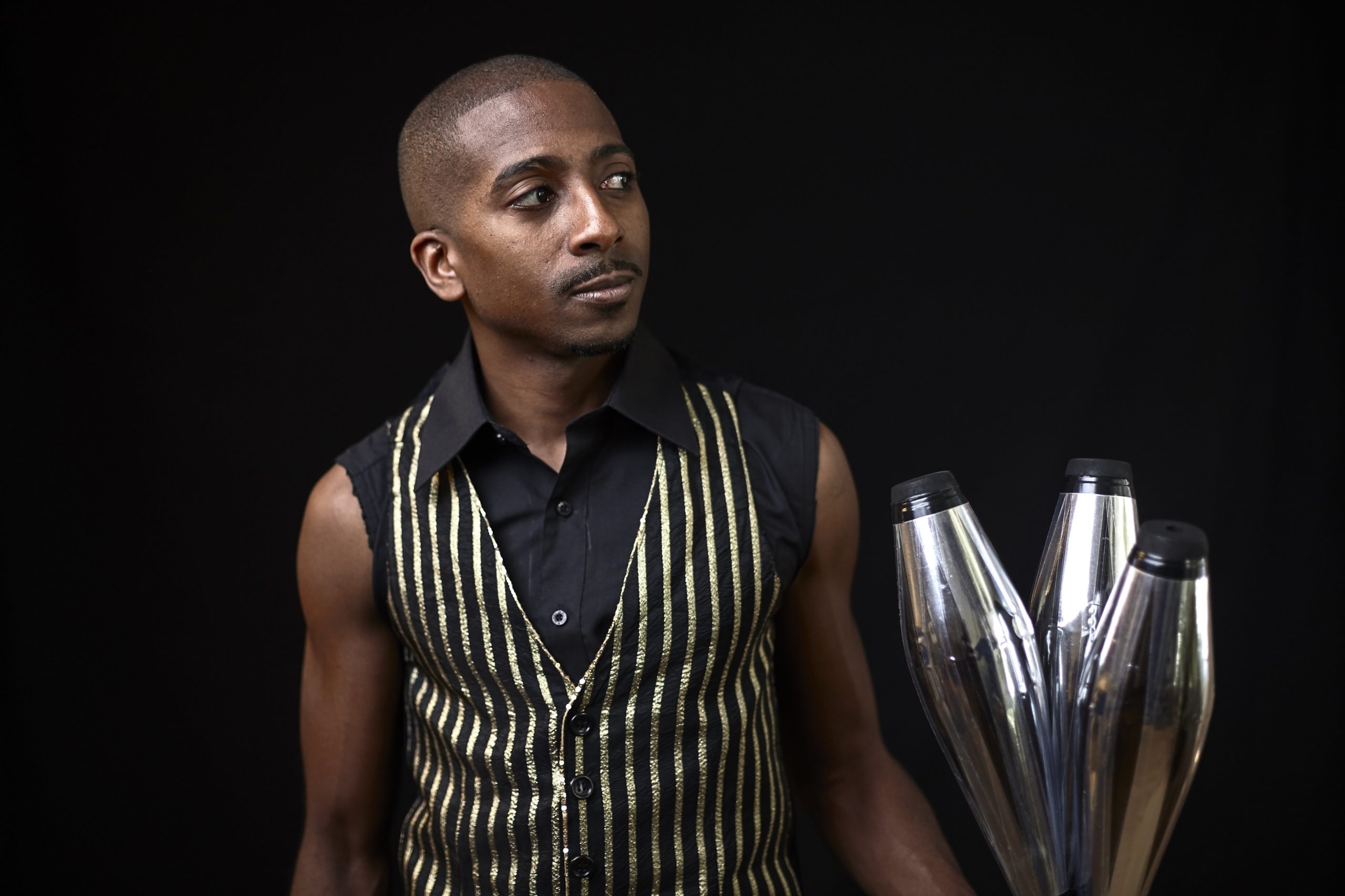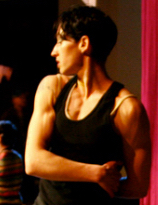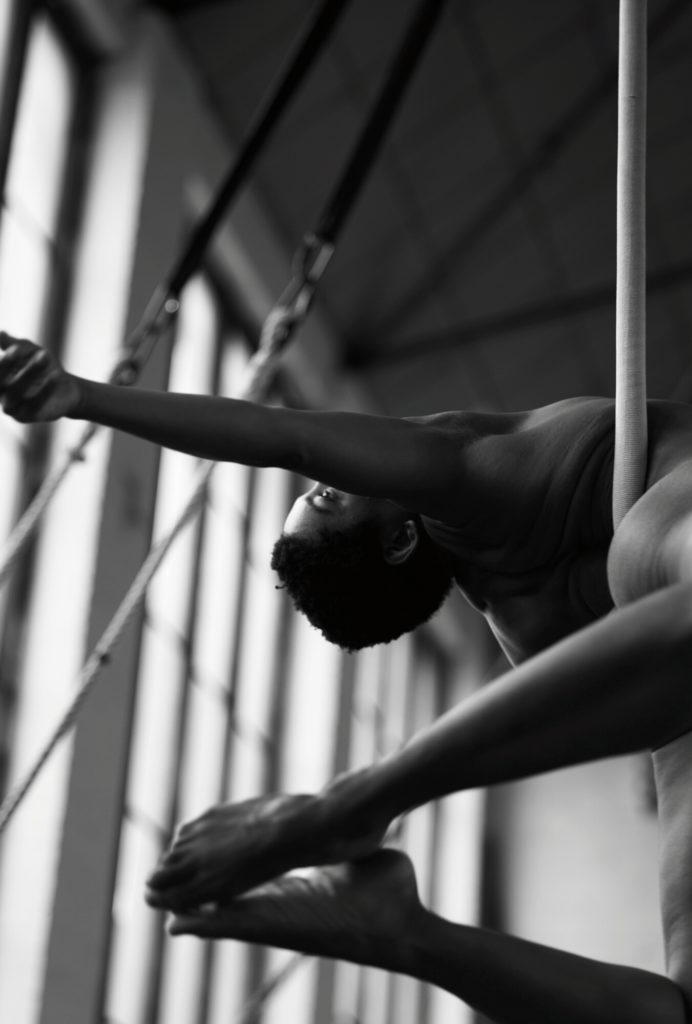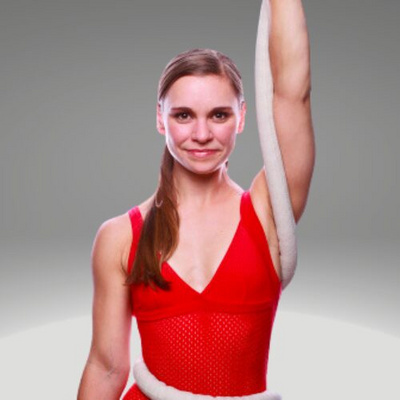People of Color in Contemporary Circus: Culture, Identity and Representation

On November 6, 2019, Gibney Dance, a prominent dance institution in New York City, hosted a Long Table discussion entitled People of Color in Contemporary Circus. This is the second of three articles which aims to, in the spirit of the Long Table Discussion, be an avenue through which the conversation can continue. And most importantly, give space for the voices of people of color in contemporary circus.
The conversation was hosted by Monique Martin, Director of Programming at Harlem Stage, and included core participants Kiebpoli “Black*Acrobat” Calnek, burlesque performer Denae “Ravenessa” Hannah, Paris the Hip Hop Juggler, and Susan Voyticky, Artistic Director of Loki Circus Theater. Much more was said than what this series of articles can summarize; highlights from the conversation have been extracted here.
The discussion started with stories about street performance and the black body in public space. This segued into how European cultures value circus differently than America. Sometimes there were pauses in which we all breathed together as one facet of the conversation sunk in and mulled in our minds before someone else offered a new thought or story.

Voyticky: My mother actually put a very high value on culture, but she put a high value on culture that she felt was held in esteem. I think she would have been thrilled if I had become a dancer or even an actor. Circus in her mind — I think she even said to me something like, they come in the night, and they leave in the night, and they take your children! (laughter) Her understanding of the circus was definitely something that she did not want her daughter to be a part of, culturally. Whereas, when I went to France, I experienced such an entirely different – such a revelation of culture around circus. In France, circus is like ballet… It’s a perfectly normal thing… People have time and space to make their work. It’s considered work to be working on your work.
The art that I saw there was so inspiring and so transformational — to see circus taken to its extreme where the poetry of the body can be communicated to people on an emotional level… That culture doesn’t exist here in the United States, certainly not around circus… How do we get better at having more cultural accordance and inspiring more people? The great things that I’ve seen since I’ve come back to the States is that there’s a lot more going on… We’re right at the beginning of getting both an older generation that has a lot of information and inspiring younger people to participate in this art form. With that, I feel like we’ll get a lot of growth. Then the question is, where are the jobs? Where is the money coming for the productions to hire these amazing young people as they come through the system?
We took a breath together.
Cornelius Carter (retired Chair, University of Alabama Dance department) to Ravenessa: You know, you’re a big icon. We discuss you all the time in an intellectual environment because you’re so honestly brave; you’re just so brutally honest… You’re not asking permission to be in a way that I don’t think a lot of black women get to be without being labeled a whole lot of other things.
Ravenessa: It’s really interesting to think about permission: Who gets to be sexual, sensual, and how can you inspire people to be open and explore that?… I’m already so far in it that I’m like, ‘here we go!’… There are burlesque performers who are coming out of trained dance, university programming; there are people coming from the strip club; there are people coming from different ways of dancing. They are all backstage, and you’re all sharing information. Culture often operates in those spaces. What new music is coming up might be played by a DJ at the strip club. Then your friend is like, ‘Did you hear this song, this is an artist that is about to be a big deal.’ It’s so interesting the way that information is passed. It makes you go back and think, what were black performers, that were maybe called shake dancers before, going through? The history of the Chitlin’ Circuit — where were spaces and places that people were moving through?
A pause. A breath.
 Maia Ramnath (Founder/Artistic Director, Constellation Moving Company): I identify myself as a white-passing mixed-race person. My dad is from India… My mom’s family is midwestern, Scandinavian background. I want to address the question of what is contemporary circus but as related to who does it, whose culture it represents, who it speaks to, and who has access to it?… I use this discipline, this form, this physical vocabulary as a medium for what you’re trying to say, for the meaning, for the content, for the story you’re telling, how you’re affecting consciousness. Like any other art, you have something to say, you’re engaging with the world, you’re engaging with other people. Where I think this fits into race and culture and ethnic background and who’s doing this, is not just which bodies are engaged in these physical disciplines, but what are the stories that get told? What are the meanings that need to be delivered? What is the engagement with the world that needs to happen? What is being said? What’s not being said?… If we are going to talk about people of color in contemporary circus and as an art form what’s it doing, what is or isn’t in the content?
Maia Ramnath (Founder/Artistic Director, Constellation Moving Company): I identify myself as a white-passing mixed-race person. My dad is from India… My mom’s family is midwestern, Scandinavian background. I want to address the question of what is contemporary circus but as related to who does it, whose culture it represents, who it speaks to, and who has access to it?… I use this discipline, this form, this physical vocabulary as a medium for what you’re trying to say, for the meaning, for the content, for the story you’re telling, how you’re affecting consciousness. Like any other art, you have something to say, you’re engaging with the world, you’re engaging with other people. Where I think this fits into race and culture and ethnic background and who’s doing this, is not just which bodies are engaged in these physical disciplines, but what are the stories that get told? What are the meanings that need to be delivered? What is the engagement with the world that needs to happen? What is being said? What’s not being said?… If we are going to talk about people of color in contemporary circus and as an art form what’s it doing, what is or isn’t in the content?
I relate a lot to this question of appropriate and exoticisation. I’m often questioned if I want to use say, Indian music or Indian cultural knowledge — ‘Why are you using that?’ This is really deep for me, and I have important things to say, and I think a right to say them. That’s not necessarily obvious…Who gets to access which kinds of culture and [can] use them in which ways?… What do we use this art form for? What are the important things that it can be addressing, that it is addressing, that it’s not addressing?
Martin: I think it’s really interesting to think about that through a cultural lens because of the… limited number of people or expressions…Who’s advancing the work and what is possible culturally?
Paris: When it comes to something like juggling, which is overwhelmingly white, what I see is, not only are they [an audience] used to an elementary version of it… they are seeing a white expression of it. And that’s only somewhat scratching the surface of how it can be expressed… In many cases, representation is enough… You thought you saw everything you could see about how something can be expressed, but then, no you haven’t. Just try to imagine music without any black contributions. Then you start thinking how much music you would have never heard… I was at the Austin, TX juggling festival in February, and they happened to hire an Ethiopian performer as well. It was the first time I was not the only black juggler in the show… What was cool was that the audience, which was about 90% white, got to see not just that person who juggled who happened to be black, they got to see more than one example; they started to see a direction you could go if you just hire more people of color. Who is it for? Everybody in terms of just general cultural growth.
Ravenessa: One thing that I find most exhilarating about burlesque — and I think this extends to circus and sideshow — is being able to take on different personas and play in it…I don’t think we get to do that in general, and particularly for black women, having spaces to play and take on different personas is a huge release…I think play — I keep coming back to that word because we don’t get to do enough of it as adults — I think black women are working hard, and focused, and holding stuff down; I think to be able to be like, ‘I’m a butterfly right now!’ or ‘I’m a dragon tomorrow!’… To see people try those things on and have play is really beautiful. These art forms offer a space for imagination and growth.
Calnek: I’d like to share an experience with a company in the Bay Area [of San Francisco, California] called Topsy-Turvy. For me, they expanded my idea of what circus can be… Their mission was to do queer, trans, people of color circus. Those were the people who were in the circus, running the circus, producing the circus… To be in a room full of all black and brown people, circus artists of all disciplines, was a revelation… There was a Queer Cultural Council that was supporting us, there was the community that was supporting us, and it kind of made the dream real.

I got to tell a story about a mother who is fearful for her black child. Mike Brown had just gotten murdered in Ferguson [Missouri], and I had no place — other than hiding in my house — I had no place to grieve… It’s my job as an artist to work through it, share it, and then hopefully make conversation around it. So I was supposed to do a little show, and then the murder happened. Then Jay Cole came out with a song in response to the murder, and all of a sudden all my choreography made sense. I made a whole piece in a day because I was so inspired by the song, by what just happened, my own grief, my own feeling as a parent, my own fear for my own child. The rope became my child. I became every woman. It was this moment where I felt like the only way — the only container for all of this emotion – was up in this vertical sphere. Where I was this brown body up there, wrapped up in my rope, wrapped up in my emotion, wrapped up in my kid, wrapped up in the times and the society. Going through these drops and falls and releases to express that pain and that wonderment… Those are the kind of stories to continue to tell, and I want others to tell… Those people who were in the show have gone on to teach or gone on to do more shows, and there’s the legacy that’s grown out of that experience. That’s the future. That’s what I’m hoping to have more of.
Featured Image: Paris the Hip Hop Juggler. Photo credit: Good Light Works.
Editor's Note: At StageLync, an international platform for the performing arts, we celebrate the diversity of our writers' backgrounds. We recognize and support their choice to use either American or British English in their articles, respecting their individual preferences and origins. This policy allows us to embrace a wide range of linguistic expressions, enriching our content and reflecting the global nature of our community.
🎧 Join us on the StageLync Podcast for inspiring stories from the world of performing arts! Tune in to hear from the creative minds who bring magic to life, both onstage and behind the scenes. 🎙️ 👉 Listen now!
